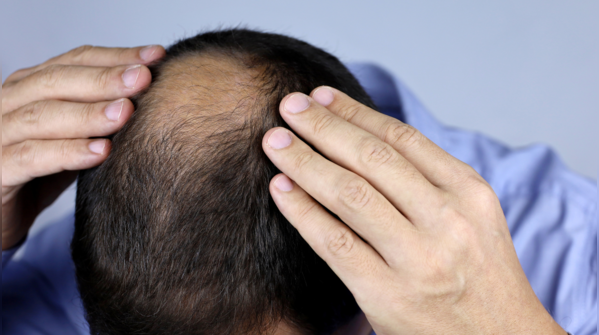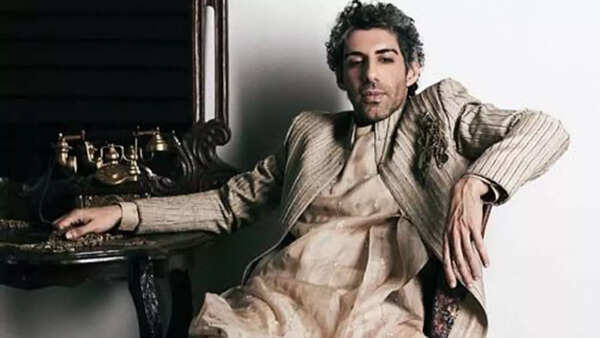- News
- lifestyle
- health-fitness
- health-news
- 6 signs seen in our hair that indicate these common nutrient deficiencies
6 signs seen in our hair that indicate these common nutrient deficiencies

What are the signs that our hair gives when we are nutrient deficient?
Our hair tells a deeper story about what’s happening inside the body. When strands start behaving differently - whether by falling out, changing colour, or losing texture - it might not just be about the wrong shampoo or a stressful week. Many times, these signs are subtle hints that the body is missing out on key nutrients or that hormones are not balanced.
Here’s a closer look at six common hair-related changes that are directly linked to nutritional deficiencies or internal imbalances—each one offering a clue worth paying attention to.

Premature greying may point to vitamin B12 deficiency
When hair begins to turn grey before the age of 30, it’s not always about genetics. One of the most overlooked causes is a lack of vitamin B12. This essential nutrient plays a critical role in producing red blood cells and supporting healthy nerve function. Without enough B12, melanin production—the pigment responsible for hair colour—can slow down, leading to premature greying.
B12 deficiency also affects energy metabolism, which can impact hair follicles directly. People with digestive issues or those who follow a strict vegetarian or vegan diet often face this deficiency more commonly.

Brittle, dry hair could signal low omega-3 levels
When hair starts feeling dry, frizzy, and prone to breakage, a possible cause could be a deficiency in omega-3 fatty acids. These healthy fats nourish the scalp and keep hair strands hydrated from within. Omega-3s are not produced by the body naturally and must be obtained through diet—mainly from fatty fish, walnuts, and flaxseeds.
Without sufficient omega-3, the scalp can become dry and irritated, while hair loses its natural elasticity and shine. This often results in brittle strands that snap easily when brushed or styled.

Hair thinning is often linked to iron deficiency
Gradual thinning of hair across the scalp is one of the most classic signs of iron deficiency. Iron plays a major role in the formation of hemoglobin, which helps carry oxygen to cells, including those that stimulate hair growth. When the body runs low on iron, hair follicles don’t receive enough oxygen, weakening them over time.
This can lead to excessive shedding and an overall reduction in hair volume. Women of reproductive age are especially vulnerable to this due to menstrual blood loss. Regular screening and including iron-rich foods like spinach, lentils, and lean meats can help maintain healthy levels.

Persistent dandruff might be due to zinc deficiency
Flaky scalp and stubborn dandruff that doesn’t improve with anti-dandruff shampoos could be a red flag for low zinc levels. Zinc is vital for maintaining the oil-secreting glands attached to hair follicles. It also supports skin regeneration and immune response - both of which are crucial for a healthy scalp environment.
A deficiency in zinc can trigger inflammation and impaired healing, making the scalp prone to flaking and irritation. Adding nuts, seeds, whole grains, and legumes to the diet may help restore this vital mineral and reduce scalp issues over time.

Baldness can be a result of high dihydrotestosterone (DHT)
When patchy bald spots or receding hairlines start appearing—especially in men—it could be the effect of elevated levels of a hormone called dihydrotestosterone (DHT). This hormone is derived from testosterone and is known to shrink hair follicles over time, especially in genetically predisposed individuals.
While not exactly a nutrient deficiency, hormonal imbalances like high DHT levels can lead to androgenic alopecia - a common form of hair loss. Managing DHT often involves medical consultation, but balanced nutrition and avoiding inflammatory foods can support hormonal health indirectly.

Hair loss all over the scalp may be tied to high cortisol levels
Significant hair fall that happens suddenly or in large volumes may be associated with elevated cortisol, the body’s primary stress hormone. Chronic stress leads to a condition called telogen effluvium, where a large number of hair follicles enter a resting phase and eventually shed.
High cortisol disrupts the natural hair growth cycle and can worsen other nutrient deficiencies like iron or zinc. Practicing stress management techniques like mindful breathing, yoga, or even simple daily walks can play a major role in lowering cortisol and supporting overall hair health.








